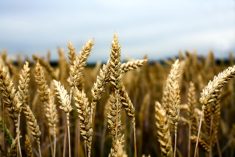Ontario has the potential to further expand its role as a national leader in organic food production and sales, according to a new report.
The Organic Council of Ontario and the Canadian Organic Trade Association recently published the 2024 “Ontario Organic Market Report” which used market data on organic sales at major grocery chains, compiled by the Nielsen company.
Why it matters: The report analysis can provide organic producers and processors with a reliable indication of consumer preferences in Ontario.
Read Also

Maizex brings Elite forage seeds under its brand umbrella
The seed catalogue for Maizex Seeds takes on a different look for its 2026 edition thanks to the introduction of a new marketing initiative dubbed “Ration 365.”
“The report outlines several key strategies to ensure continued growth in Ontario’s organic sector. These include optimizing the organic supply chain, improving affordability and accessibility, and advocating for supportive policies,” the lobby groups said in a release about the report, which was distributed in late September.
Funding for the data collection and report preparation came, in part, through the Canadian Agricultural Partnership agreement between federal and provincial governments.
The analysis acknowledges that, as was the case in other jurisdictions globally, post-COVID-19 grocery price inflation weakened consumer preference for organic products in Canada.
“Ontario’s total tracked organic products rose from 3.4 per cent (of the entire grocery retail market) in 2020 to 3.8 per cent in 2022, before settling at 3.6 per cent in 2023,” the report states, “whereas the national figures declined from 4 per cent to 3.4 per cent over the same period.”
Ontario’s organic market share is described as having “moderate growth” compared to pre-COVID numbers, which saw steeper year-over-year growth. However, the report adds that “while there was a general decline in the market share of organic products nationally” from 2020 to 2023, Ontario’s market demonstrated more resilience during this period.
As with conventional foods, prices for organic products rose following the pandemic. In the organic fresh meat/seafood category, on average, consumers paid $3 more per kilogram in 2023 compared to 2022. Organic pork led the meat category, jumping from $24.60 per kilogram in 2022 to $40.56 per kilogram in 2023. Organic chicken rose from $31.42 to $37.72 per kilogram over the same time.
But those numbers don’t tell the full story.
The clear category leader in fresh meat/seafood, with 72 per cent of category sales totalling $19 million in Ontario in 2023, is organic beef. It saw an average price increase of just 73 cents per kilogram (from $18.18 to $18.91) between 2022-23.
Prices for organic fresh produce, meanwhile, rose by $1.70 per kilogram year-over-year. In the organic fruit category, quince and blueberries topped the list for average price increases in Ontario between 2022 and 2023, with quince rising from $25.29 to $27.46 per kilogram and blueberries rising from $17.80 to $19.62 per kilogram.
“The price changes per unit for various categories from 2022 to 2023 underscore the broader impact of inflation on consumer goods,” the report said. “Notably, essentials such as infant formula and refrigerated items like dough and pasta have seen significant price increases. Additionally, products like coffee and coffee creamers have also experienced notable hikes in prices.”
When compared to conventional prices, organic prices can also influence consumer preference. The premiums paid in 2023 for organic options ranged from a whopping $33.20 per kilogram for fennel and $16.69 per unit for food colourings to a negative premium (where the average conventional price is higher than for organic) for rhubarb, parsnips, broccoli, popping corn, tofu, meat and dairy alternatives and chocolate.
Others at or near the top of the categories for price differences compared to conventional in 2023 in Ontario included refrigerated/deli pizzas, canned tomatoes and tomato juice, pork, chicken, turkey, artichokes and garlic.
The report stresses that “not all products have been equally affected” by factors contributing to both rising prices and a greater difference between conventional and organic prices.
“Some organic items have shown resilience, maintaining stable prices or even a price decline despite economic pressures. This phenomenon of inflation-resistant products is both intriguing and essential for consumers looking to manage their budgets effectively.”
The report highlights organic beans as one such category. Ontario’s organic consumers are considerably more likely to buy fresh, dried and canned beans and peas compared to their counterparts in other provinces.
But “what is more interesting,” the report said, “is that the prices of both categories decreased since 2022, unlike most” other products within the fresh and canned categories.
Other organic products near the top of the list for large price decreases between 2022-23 included fresh cherries, fresh pears, fresh pumpkins, canned beets, frozen yogurt, specialty eastern foods and frozen potatoes.
Finalizing this data through the new report “presents a unique opportunity for growth, especially as the lines between organic and conventional pricing continue to blur,” said Krysten Cooper, OCO board of directors chair .
OCO director Ruth Knight, a Bruce County agronomist, added, “we believe the organic market’s future lies in innovation, education, and collaboration. By focusing on consumer awareness, product development, and sustainability, we can meet evolving consumer needs while maintaining the integrity of organic farming practices.”
The 2024 Ontario Organic Market Report is available at OCO website: organiccouncil.ca













